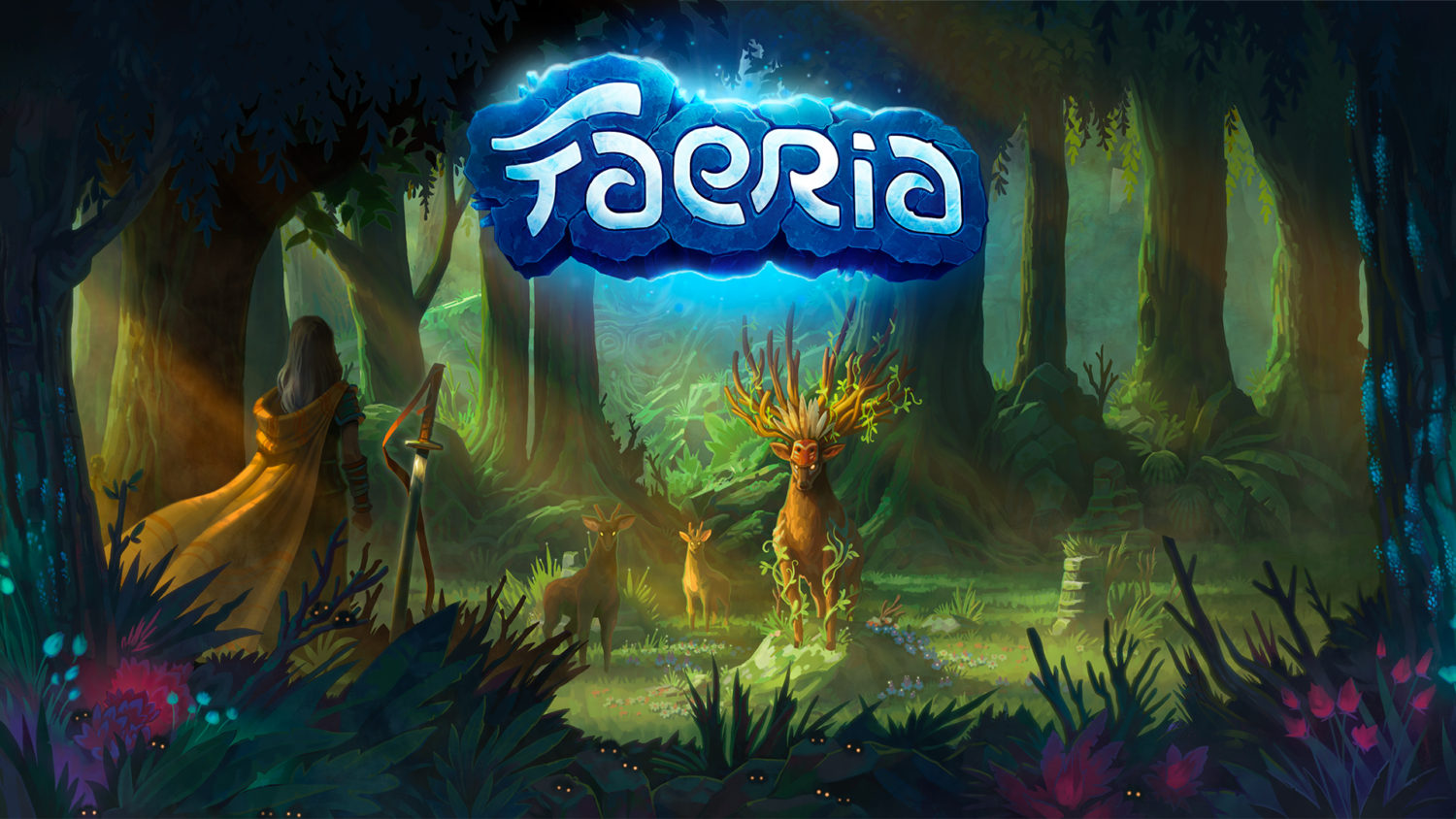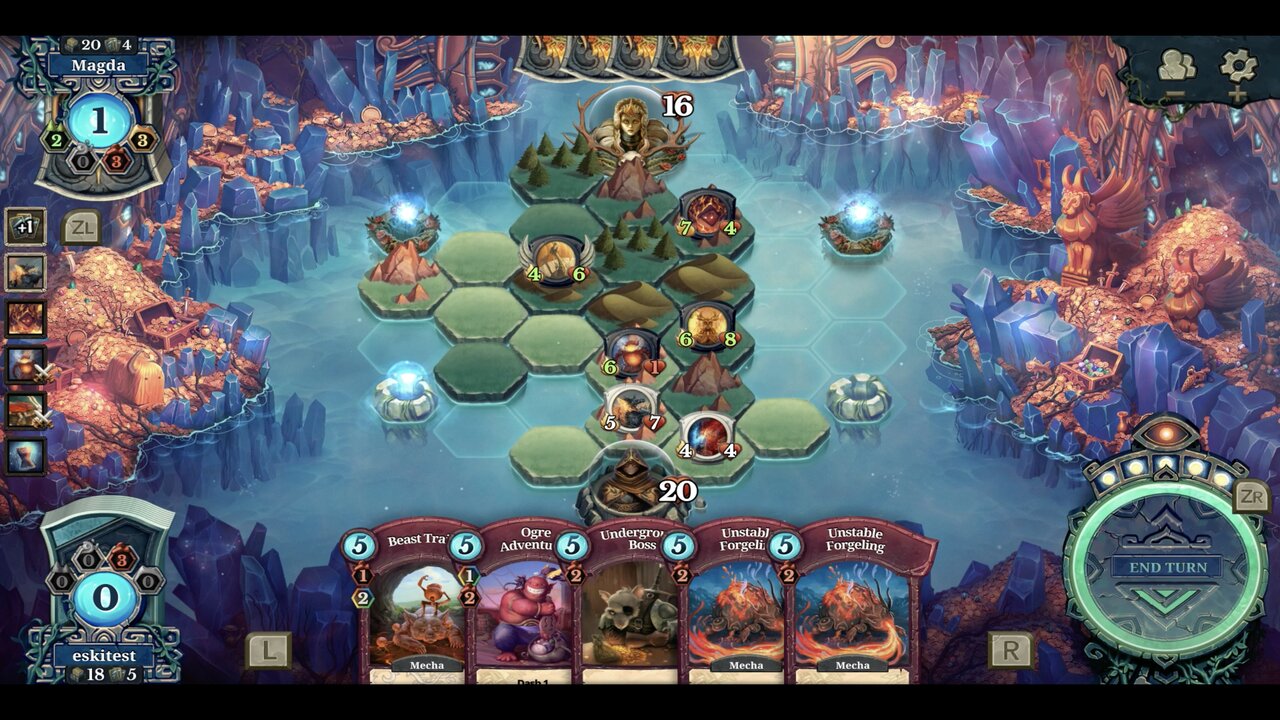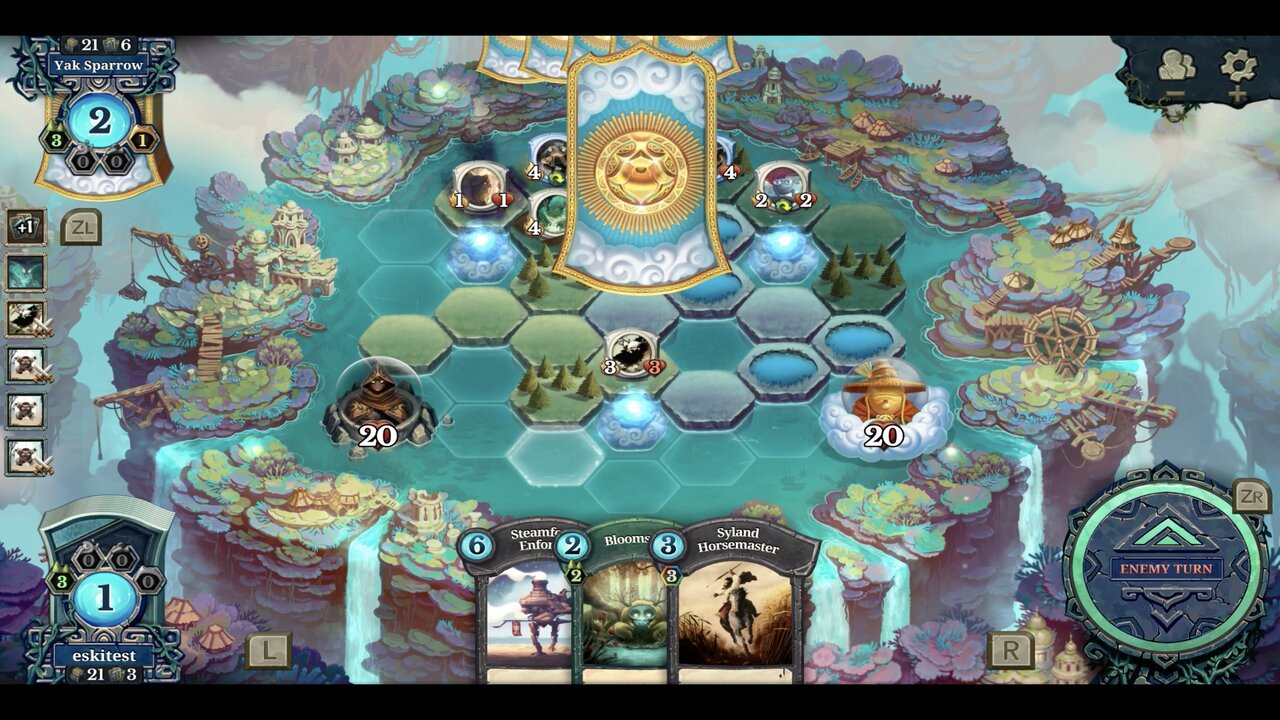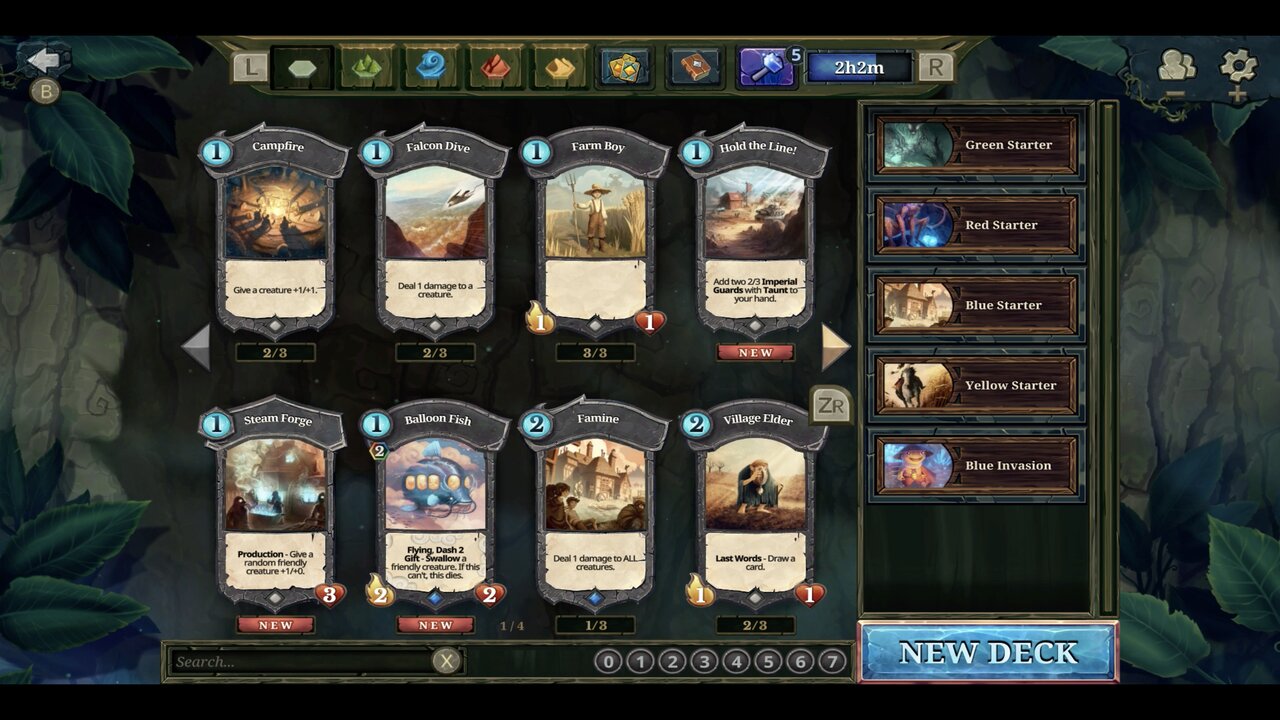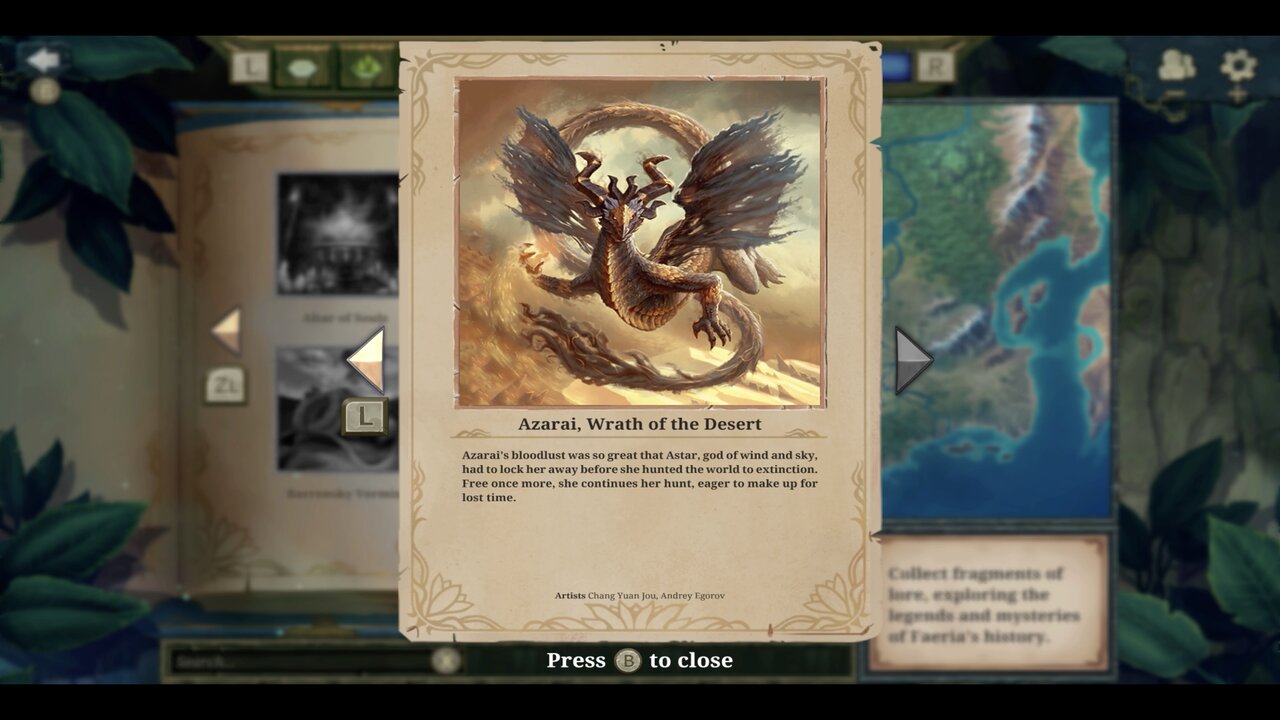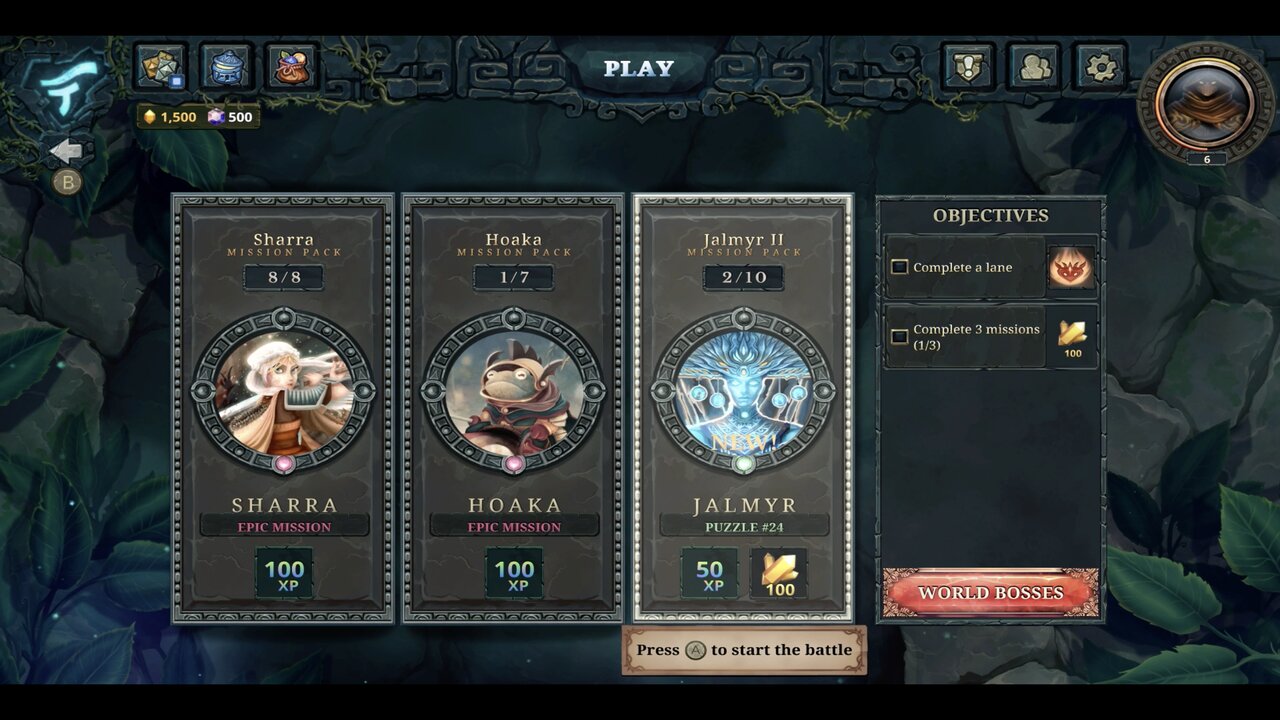The fate of the world is in your "hand."
So, is saying “here’s the deal” when talking about a turn based card game a bit too much? Probably? OK then, I won’t say it. Instead, here are my thoughts on Faeria for the Switch.
Faeria is a bit of a mélange of turn-based plus card play plus board game stuffs, all with nice artwork and a general feel that’s a bit reminiscent of Magic: The Gathering and Heroscape. When you start a round, it’s you against one opponent—either AI or an online friend. Before you can put any of the cards in play, you will need to create some type of ground: plains, woodlands, mountains, etc.
Choose carefully, because different card types require different ground types. For instance, a Beastmaster card will require woodlands to be used. The Beastmasters can travel across other ground types once they’re put on the board, but they need the right kind of ground to be put in play. The strategic elements of this game are split between playing the right type of ground and in the best location, and playing your cards in the right place at the right time.
The playing area is a large hexagon with four small hexagons per side. At each “corner” is something immovable; you and your opponent are at opposite corners, while the other four have Faeria wells (they’re a sort of mana well). The wells will provide one Faeria each to whoever is standing next to them at the start of a new round. The more Faeria you have, the more cards you can put in play during the round.
The game provides some extended training rounds to help you get the hang of ground types, card types, play mechanics, and game strategy. The game will even help you create your first couple of starter decks to ensure you get something with coherent and complementary skills. Once you have made your way through a few rounds, you can level up and make improvements to your deck, customize some of the visuals, and take on bigger and more rewarding challenges.
There are 300 cards you can unlock and upgrade to maximum potential, and the game does the player a real solid on this front—all the cards can be acquired during the course of playing the game, and it won’t give you more of a particular card once you max it out. Instead of giving duplicates of maxed-out cards, Faeria will shift to giving the player new card skins and the like. There are some other games I would like to see use something similar to limit duplicate dumping. [Just ask my iPhone. I keep telling a certain gotcha game to give me someone I don’t have, but alas, I get yet another copy of Virion. C’est la vie.]
With the wide variety of cards available and several custom decks you can build and store, there is a fantastic variety of gameplay opportunities to keep a dogged player busy for quite a long time. Also on the longevity front is the online option. You can join the Battle mode and get paired with another human player. You also have access to the Adventure mode, which will take you through a set of stages, and the ominously named Pandora mode. There, you don’t let out disaster, but you do get to use some new, and sometimes high level cards just so you can try them out before you earn them and add them to your permanent deck.
Lastly, there is a Puzzle mode, and this one gets interesting. You are presented with a tableau, and you have to figure out how to win in one turn. Don’t worry, you don’t start from scratch, you sort of come to a point in the action where there should be a way out if you lay it just right. The fun is trying to figure it out. Some of these puzzles are easy, but some of them are real head scratchers.
So far, everything has been great. However, there are a couple of things which could have been better. Most of the text displayed in the game is a bit too small, especially in handheld mode. It sounds picky, but I am a nerd. This means (by the old definition) that I wear some thick glasses, and the tiny text is a bit of a strain.
The other pain-point is the training. While there are plenty of training levels, the game could do a better job of identifying what the elements are and what they mean. For example, there are at least five different land types. It would be helpful if, even if just in the training levels, the player was given the name of the land types and what they support. This would go well with a side of explanaion why you can’t play a card when you try unsuccessfully (wrong land type, not enough Faeria, something…). These elements can be figured out as you move along, but a good orientation is less frustrating than stumbling along when there are so many facets to the game.
Once you get past these minor gripes, there is ample variety and gameplay time, especially when you join the online gaming community. And even if you don’t, there’s plenty of paid DLC available to keep things shuffling along. The game looks good and is easy to play, in that there are good action/item selection mechanics built in (the JoyCon can be used to move around, and smart select the thing you want to use). There is some luck of the draw around when you get a particular card along with strategically playing with ground selection and placement. Faeria is a fun, multifaceted game which feels like one of those games you can play for the next few years and not get weary of it.
Review: Faeria (Nintendo Switch)
Great
Faeria is a thoroughly enjoyable strategic card battler that’s consistently fun to play. This multifaceted game feels like one you can play for the next few years and not get weary of it.

